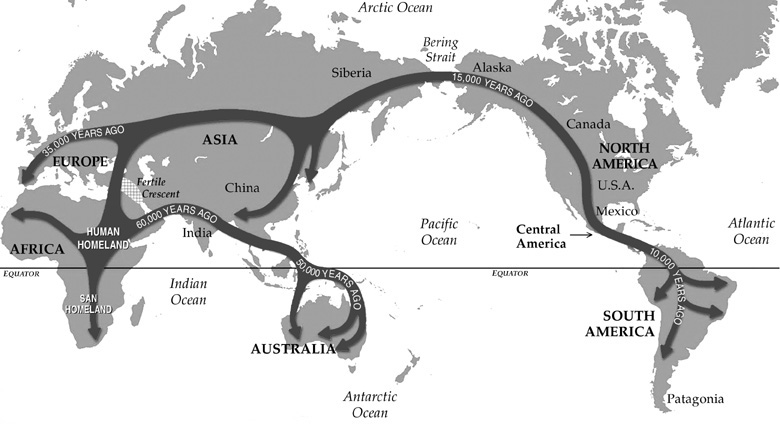I Teach Evolution, Do You? – Part II
Two weeks ago, I was struck by the information on biology teachers that I read in the article On Evolution, Biology Teachers Stray From Lesson Plan (duplicate post that you don’t have to login in to read) by Nicholas Bakalar. At that time, I decided that I would share some of my thoughts and lessons that I used to teach evolution in my freshman Biology course.
This particular lesson is the second of a series of activities that was conducted at the very end of the school year at the end of my unit on genetics after having covered standard Mendelian genetics and content associated with inheritance in humans.
The Biology of Race and Inequality
Lesson 1 – Comparing Chimpanzees using mtDNA Sequences (previous post)
Lesson 2 – Comparing Humans using mtDNA Sequences
Background – In the early summer of 2002, I attended a Dolan DNA Learning Center workshop at the Stowers Institute where a group of biology instructors were introduced to one wet lab and a number of bioinformatics activities associated with their new educational program called Genetic Origins. Scott Bronson and Ewe Hilgert ran the workshop that specifically introduced us to the study of mitochondrial (mt) DNA and Alu genomic elements.
Objective– For students to apply what they learned in the previous activitiy on comparing chimpanzee mtDNA seqeunces to the analysis to human mtDNA sequences, and to realize that mtDNA comparisons do not support the concept of distinct human races.
Because the previous activity demonstrated that mtDNA sequences were supportive of their being geographic subspecies of chimpanzees, many students will assume that the data for human mtDNA sequences will be just as supportive of geographic categorization of humans into races (they may even remember that Linneaus had segregated humans into distinct categories as well, although I would not reminded them of this directly).
In the end, students should notice that the human mtDNA data is different than the chimpanzee mtDNA data, in that there is more variation within groups of humans than there is between those same groups. In chimps there is significantly more variation between groups than within groups. The main question that arises from this observation, is “Why is this so?”
Introducing the Activity – I do little introduction for this activity. Since they would have just complete the comparison of chimpanzee mtDNA sequences, they know what to do and appreciate being allow to just get started.
- Student Handout for the activity – Comparing Humans
- Supplemental Student Document – Human mtDNA Sequences
Potential Supplemental Items
Although I haven’t used these resouces in conjunction with this specific activity, they may be nice additions that would provide students with background on the diaspora of modern human.
1. Spencer Well is Building a Family Tree for All Humanity (20:51)
I would now consider having students view this video for homework, although it is short enough that it could be viewed after they finished the activity above. Here are some comments about Spencer Wells’ research on the TED website where this video is located.
By analyzing DNA from people in all regions of the world, Spencer Wells has concluded that all humans alive today are descended from a single man who lived in Africa around 60,000 to 90,000 years ago. Now, Wells is working on the follow-up question: How did this man, sometimes called “Y chromosomal Adam,” become the multicultural, globe-spanning body of life known as humanity?
Wells was recently named project director of the National Geographic Society’s multiyear Genographic Project, which uses DNA samples to trace human migration out of Africa. In his 2002 book The Journey of Man: A Genetic Odyssey, he shows how genetic data can trace human migrations over the past 50,000 years, as our ancestors wandered out of Africa to fill up the continents of the globe.
2. Humans May Have Left Africa Earlier Than Thought
Here are two NPR audio stories from this year that may be interesting as well, An Earlier Departure Out of Africa? (9:48) and Tools Suggest Humans Left Africa Earlier via Arabia (4:23).
3. Mr. Wallace’s Line by Jared Diamond (August 1997)
This is a great general introduction to Alfred Wallace and biogeography. It mainly discusses non-human animal life in the Malay Archipelago, but there is a reference to Tim Flannary and Jonathon Kingdon’ hypothesis that successful island hopping is responsible for making modern humans modern. This thought takes a more interesting twist with the more recentdiscovery of Homo floreseinsis on one of these Indonesian Islands.
4. Luigi-Luca Cavalli-Sforza’s book, Genes, Peoples, and Languages (207 pages)
This is a great book that contains relevant background information on population genetics.

